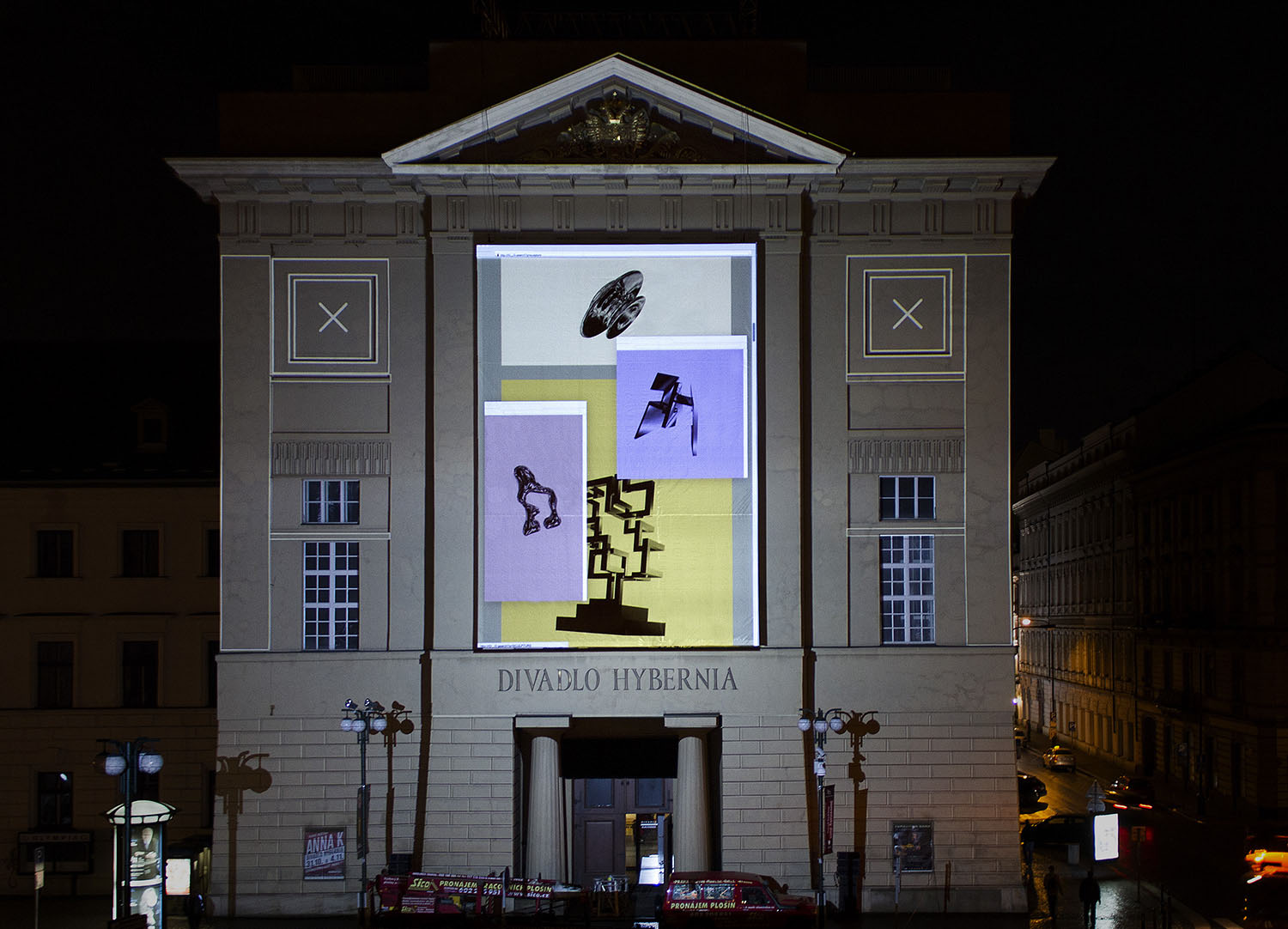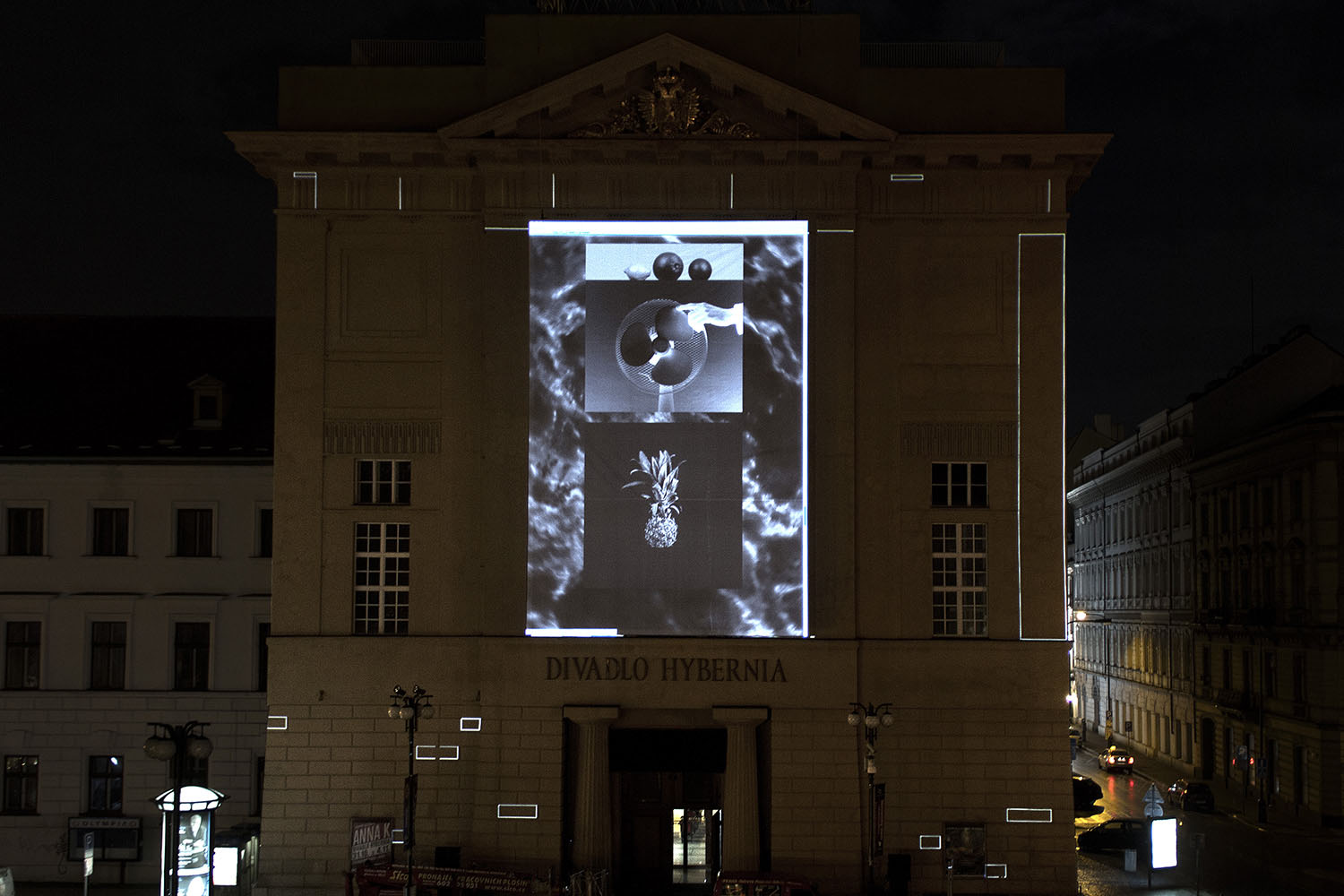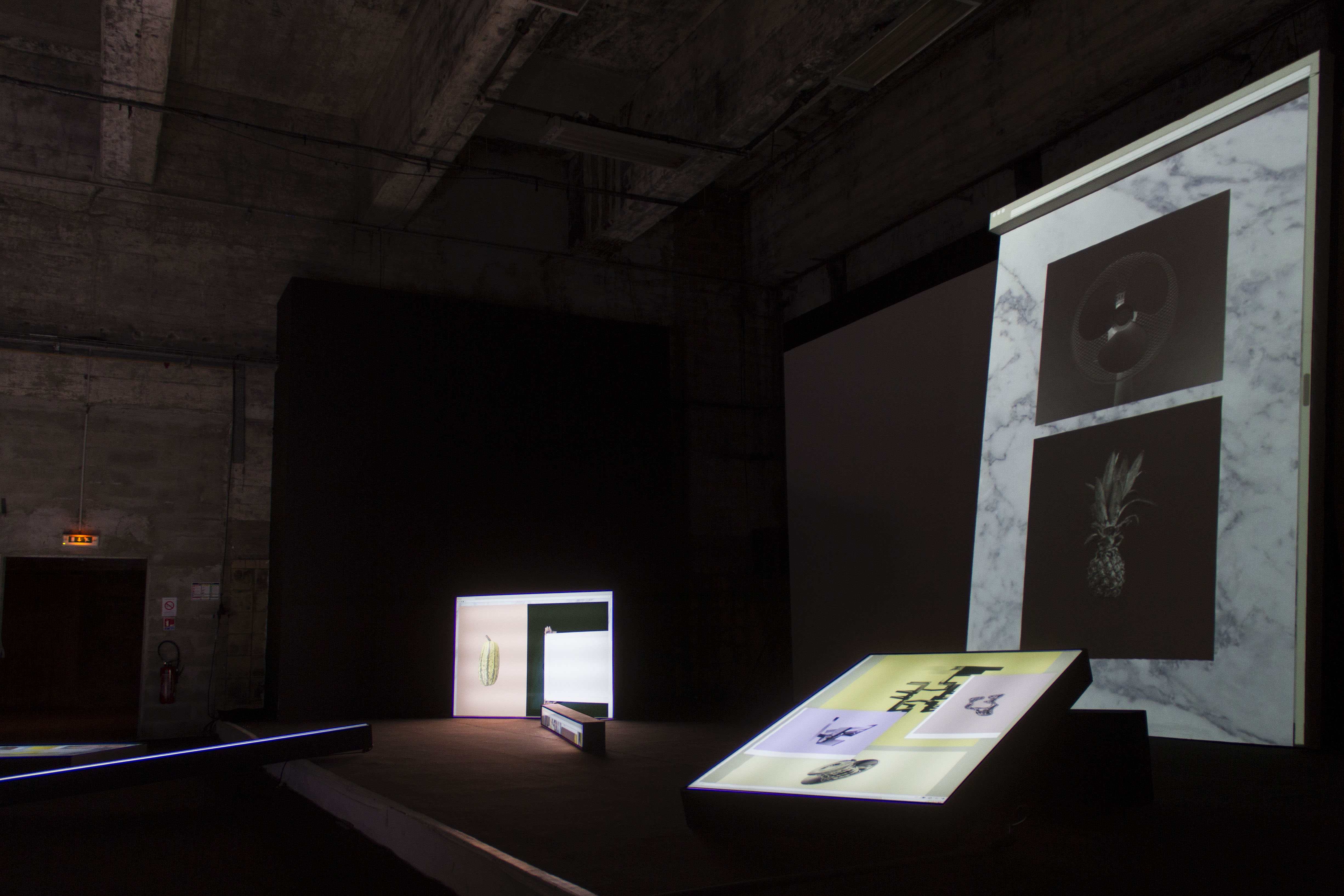An installation by Romain Tardy
Music by Loran Delforge
Production: Signal festival Prague
Coordination & project management: ANTIVJ
Hybernia Opera house, Prague, Czech Republic, October 2013.
Installation version of #DÉFILÉ premiered in 2017.
#DÉFILÉ is an audiovisual installation that presents a structure resembling an Internet browser suspended against a building. Its debut took place during the Signal festival in Prague, Czech Republic, in October 2013.
This evolving installation is part of an ongoing series of works that explores the transformative impact of the internet on our lives. It delves into the profound changes in our relationship with text, communication, self-presentation, and reflection brought about by the advent of the digital age.
The journey of #DÉFILÉ begins with a preface conveyed through text, read by a digital voice as it unfolds on the screen. This introduction sets the stage for a visual progression that unfolds within the giant web browser and the supporting building, serving as a canvas for the projection. Inspired by the logic of a visual essay, the video presentation of the installation seamlessly blends digital collage techniques, showcasing the hybrid nature of #DÉFILÉ. It serves as both a documentation of the installation in its original setting and a captivating standalone film.
Original architectural installation in Prague ↓


Indoor version of the project, with additional lightboxes ↑
#DÉFILÉ explores the phenomenon of our evolving language, where textual and visual elements seamlessly merge to communicate across networks. In today's world, images, emojis, and memes have become integral parts of our communication, often conveying emotions and intentions that are difficult to express through words alone. This shift hints at the emergence of a post-verbal language, a realm where visual symbols play a vital role in conveying meaning.
The preface of the work highlights the cultural mutation predicted by ethologists like Richard Dawkins, who introduced the concept of "meme" in the 1970s before the rise of the internet. #DÉFILÉ also challenges the intricate relationship we have with the web browser and questions its status. What happens when an object that traditionally fosters a private and intimate experience (as internet browsing is typically a solitary endeavor) is transplanted into a public and physical space?
This inversion of the web browser's relationship unfolds throughout the installation, utilizing videomapping techniques to extract synthetic images from the computer realm and project them into tangible space. By superimposing fleeting images onto physical supports, the installation invites us to observe the encounters and potential frictions between these two worlds.
Drawing inspiration from contemporary artists like Camille Henrot and Bertrand Lavier, with explicit references to Lavier's Disney Sculptures, #DÉFILÉ explores the visual identity of a "post-pop" mass culture where consumers themselves are also creators.
The Internet, with its boundless nature, leaves an indelible mark on our conduct. It challenges us to make sense of the vast sea of information and visual stimuli it presents. How do we organize, classify, and distinguish between a master's painting and an advertisement when they are displayed without distinction? Such juxtapositions become apparent, such as the Venus de Milo and the bust of Julius Caesar alongside an unexpected series of faucets—all results of a simple search for "sculpture" on Google 3D images.
Finally, #DÉFILÉ explores new narrative forms that have emerged from digital practices, particularly the internet. Action unfolds before the audience without their interaction, as if watching a film where popup windows materialize and fade. By presenting a fluid succession of diverse paintings in a seemingly inevitable sequence, #DÉFILÉ challenges the notion of "apparent logic" prevalent in digital and internet culture. It questions our freedom to engage in original thought when everything is designed to give us the illusion of understanding our surroundings, from PowerPoint presentations to YouTube recommendations.











Pictures 4 & 5 courtesy Alexander Dobrovodský